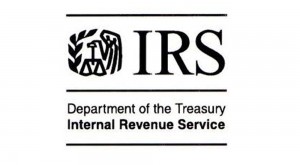How to get free money from the US taxman

Known as Earned Income Credit (EITC or EIC), it is a refundable federal income tax credit for low- to moderate-income earners. Most immigrants earning within the $15,000 level are missing out on this very important legislation intended to help wage earners, whether on the books or not.
The IRS estimates that four out of five eligible households file for EITC. A bigger number of individuals do not even apply for it due to lack of information. You may be among the millions who are eligible but did not file a tax return thinking there is no tax due after all. Or, you may be assuming you are not eligible, being as a grandparent supporting a grandchild, or an individual without a child.
The EIC is a credit for people who work and earn less than $51,000. There are two ways to get it: 1) you work for someone who pays you or 2) you operate a business or a farm. Earned income does not include unemployment benefits, retirement income, investment and dividend income, social security, child support and alimony.
The US Congress originally approved the tax credit legislation in 1975 in part to offset the burden of social security taxes and to provide an incentive to work. When EITC exceeds the amount of taxes owed, it results in a tax refund to those who claim and qualify for the credit even though there are no taxes that are actually due. The 2014 filing guidelines are shown below.
Earned Income and adjusted gross income (AGI) must each be less than:
$46,997 ($52,427 married filing jointly) with three or more qualifying children
$43,756 ($49,186 married filing jointly) with two qualifying children
$38,511 ($43,941 married filing jointly) with one qualifying child
$14,590 ($20,020 married filing jointly) with no qualifying children
The maximum credit (EITC) for 2014 follows:
$6,143 with three or more qualifying children
$5,460 with two qualifying children
$3,305 with one qualifying child
$496 with no qualifying children
The qualifying child must have a social security number valid for employment, younger than 19 years or younger than 24 years, for a full time student. The term “child” refers to son, daughter, legally adopted child, stepchild, foster child or a descendent of any of them such as your grandchild. Also considered is a dependent brother, sister, half-brother, half-sister, stepbrother, stepsister or a descendant of any of them such as a niece or nephew. In order to determine who is a qualifying child, refer to IRS publication: https://www.irs.gov/Individuals/Qualifying-Child-Rules
If anyone in your household is working, use the EITC assistant on line and calculate your past (2012) earnings and eligibility: https://apps.irs.gov/app/eitc2012/Forward_2012_Calc.do;jsessionid=5+mNYpiwWNYSZMRYi5vlkQ__
